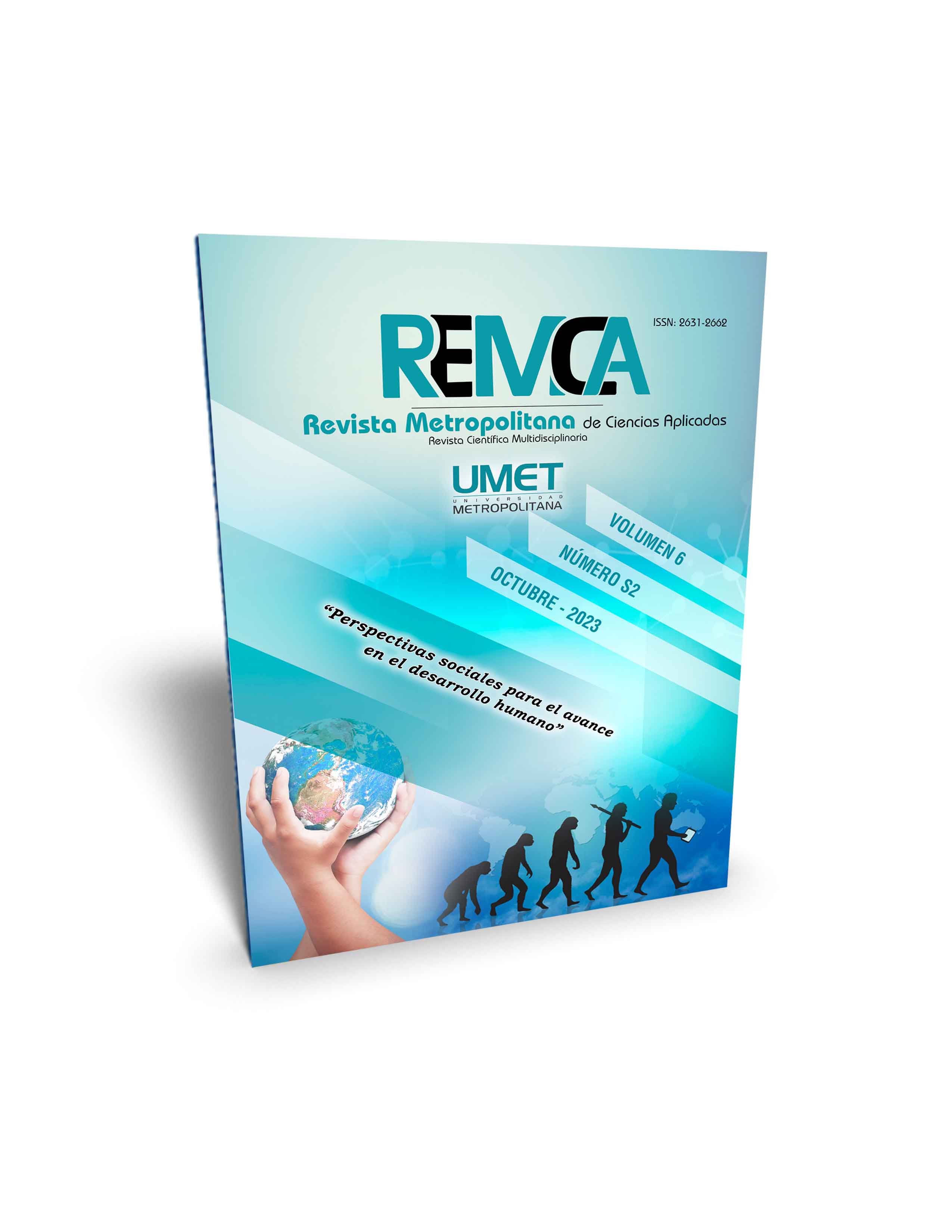Autoconcepto y rendimiento académico de los estudiantes de la Facultad Ciencias de la Salud
DOI:
https://doi.org/10.62452/bnm4e232Palabras clave:
Autoconcepto, rendimiento académico, estudiantesResumen
El propósito principal de esta investigación fue valorar el autoconcepto y los resultados del rendimiento académico de los estudiantes de uno de los seis programas educativos de la Facultad. Las dos categorías se compararon para conocer sus características y comprobar si existían relaciones entre las diferentes dimensiones del autoconcepto y los resultados académicos alcanzados por los estudiantes de la Licenciatura en Educación Física y Deporte que fue el primer programa educativo que se estudió. Se utilizaron métodos del nivel teórico como el histórico lógico para determinar las trayectorias de los estudiantes dentro del programa educativo y la Facultad. Se aplicaron métodos científicos como el análisis y la síntesis, mismos que sirvieron para valorar las diferentes categorías o dimensiones del autoconcepto y establecer sus similitudes y diferencias. Se utilizó el método inductivo deductivo para conformar varias partes del informe final de investigación y del nivel empírico se utilizó el método del análisis de documentos para consultar textos y documentos. La técnica de la encuesta favoreció la obtención de los datos de la investigación. Para la estadística se trabajó con el sistema SPSS. Los resultados del trabajo favorecen el diseño y desarrollo de estrategias didácticas que vinculen los resultados del autoconcepto de cada grupo con la capacidad de estudiar para mejorar las calificaciones de los estudiantes en las materias que deberán cursar en semestres posteriores. La contribución de la investigación es fuerte porque permite el perfeccionamiento de la labor educativa que llevan a cabo los docentes.
Descargas
Referencias
Ariza, C. P., Rueda Toncel, L. Ángel, & Sardoth Blanchar, J. (2018). El rendimiento académico: una problemática compleja. Revista Boletín Redipe, 7(7), 137–141.
Bernal, Y., & Rodríguez, C. (2017). Factores que Inciden en el Rendimiento Escolar de los Estudiantes de la Educación Básica Secundaria. (Tesis de maestría). Universidad Cooperativa de Colombia.
Caballero Montoya, R. (2021). La relación entre el Autoconcepto académico y el Rendimiento Escolar en adolescentes con y sin TDAH. (Trabajo de investigación). Universitat Oberta de Catalunya.
Chávez-Becerra, M., Flores-Tapia, M., Castillo-Nava, P., & Méndez-Lozano, S. (2020). El autoconcepto en universitarios y su relación con rendimiento escolar. Revista de Educación y Desarrollo, 53.
Closas, A., Franchini, N., Kuc, L., Dusicka, M., & Hisgen, C. (2018). Modelo logístico explicativo de las relaciones entre autoconcepto y rendimiento académico. Revista de la Facultad de Ciencias Económicas, 20, 187-208.
Cordero, O. (2015). El autoconcepto en estudiantes de educación general básica con bajo rendimiento académico. (Tesis de pregrado). Universidad de Cuenca.
Duarte, L. L., & Cardozo, L. A. (2021). Percepción del autoconcepto físico en estudiantes universitarios en tiempos de confinamiento por COVID-19. Cuadernos de Psicología del Deporte, 21(3), 48-61.
Fuentes, M., García, J., & Gracia, E. (2011). Autoconcepto y ajuste psicosocial en la adolescencia. Psicothema, 23(1), 7-12.
Garaigordobil, M. (2011). LAEA. Listado de adjetivos para la evaluación. TEA Ediciones.
García, F., &. Musitu, G. (2014). Manual AF-5 Autoconcepto Forma 5. TEA Ediciones.
Hernández, R., Fernández, C., & Baptista, P. (2014). Metodología de la Investigación. McGraw-Hill / Interamericana Editores, S.A. de C.V.
Iñiguez, F. (2016). Influencia de la familia en el autoconcepto y la empatía de los adolescentes.
Navajas-Seco, R. (2016). La mejora del autoconcepto en estudiantes universitarios a través de un programa expresivo-corporal. (Tesis Doctoral). Universidad Complutense de Madrid.
Quintero, Y. (2020) La importancia de la educación de la inteligencia emocional en las aulas de educación infantil. (Tesis de licenciatura). Universidad de La Laguna.
Veliz-Burgos, A., & Apodaca-Urquijo, P. (2012). Niveles de autoconcepto, autoeficacia académica y bienestar psicológico en estudiantes universitarios de la ciudad de Temuco, Chile. Salud & Sociedad, 3(2).
Descargas
Publicado
Número
Sección
Licencia
Derechos de autor 2023 Oscar Enrique Mato-Medina, José Jesús Matos-Ceballos, Juan Prieto-Noa, Fabrizio Rafael Hernández-Acal, Luis Fernando Yocupicio-Cámara (Autor/a)

Esta obra está bajo una licencia internacional Creative Commons Atribución-NoComercial-CompartirIgual 4.0.
Los autores que publican en la Revista Metropolitana de Ciencias Aplicadas (REMCA), están de acuerdo con los siguientes términos:
1. Derechos de Autor
Los autores conservan los derechos de autor sobre sus trabajos sin restricciones. Los autores otorgan a la revista el derecho de primera publicación. Para ello, ceden a la revista, de forma no exclusiva, los derechos de explotación (reproducción, distribución, comunicación pública y transformación). Los autores pueden establecer otros acuerdos adicionales para la distribución no exclusiva de la versión de la obra publicada en la revista, siempre que exista un reconocimiento de su publicación inicial en esta revista.
© Los autores.
2. Licencia
Los trabajos se publican en la revista bajo la licencia de Atribución-NoComercial-CompartirIgual 4.0 Internacional de Creative Commons (CC BY-NC-SA 4.0). Los términos se pueden consultar en: https://creativecommons.org/licenses/by-nc-sa/4.0/deed.es
Esta licencia permite:
- Compartir: copiar y redistribuir el material en cualquier medio o formato.
- Adaptar: remezclar, transformar y crear a partir del material.
Bajo los siguientes términos:
- Atribución: ha de reconocer la autoría de manera apropiada, proporcionar un enlace a la licencia e indicar si se ha hecho algún cambio. Puede hacerlo de cualquier manera razonable, pero no de forma tal que sugiera que el licenciador le da soporte o patrocina el uso que se hace.
- NoComercial: no puede utilizar el material para finalidades comerciales.
- CompartirIgual: si remezcla, transforma o crea a partir del material, debe difundir su creación con la misma licencia que la obra original.
No hay restricciones adicionales. No puede aplicar términos legales ni medidas tecnológicas que restrinjan legalmente a otros hacer cualquier cosa que la licencia permita.




